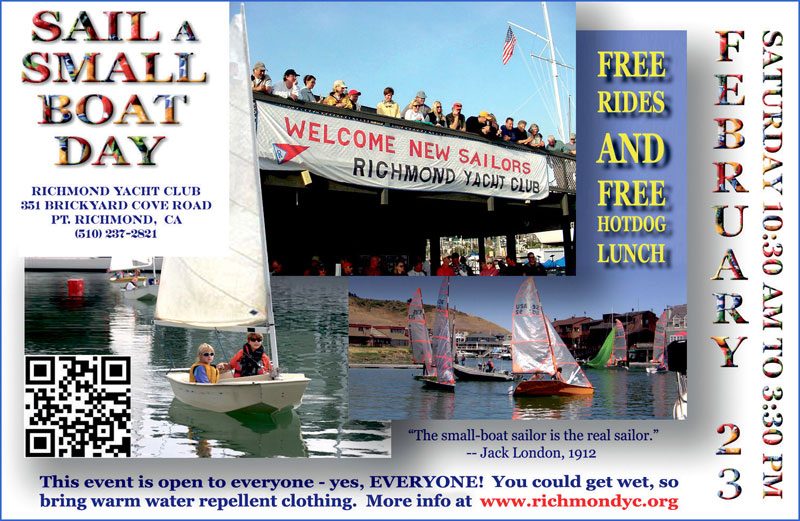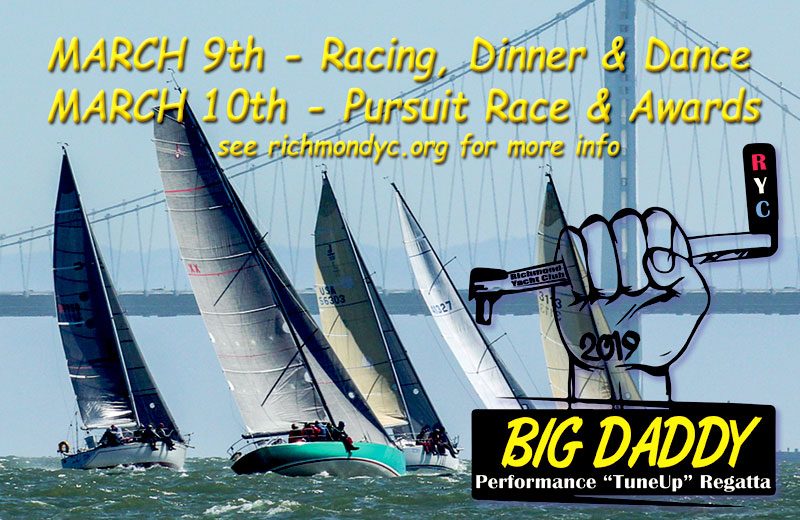
Magnetic North Takes a Stroll
As liquid-hot magma boils and cascades beneath the surface of the Earth, the magnetic north pole seems to be following the whims of subterranean flows. This has potential implications for sailors, or for anyone who uses GPS on their phones, and is a head-scratcher for the scientific community.
“Unlike the static geographic north pole, the north magnetic pole is in constant flux, influenced by the movements of iron-rich fluids deep below the Earth’s crust,” read an article by Gizmodo. “Or at least that’s the theory — the whole thing is still somewhat of a scientific mystery.”

The article went on to say that over the last 30 years, the rate of distance that the magnetic north pole moves has increased from about 9 miles per year to around 35 miles per year.
The magnetic poles are used to determine the World Magnetic Model (WMM), a construct for navigation, attitude and heading referencing systems using the geomagnetic field. The WMM — which is created through a collaboration of several countries’ government agencies, including the National Oceanic and Atmospheric Administration — provides “a five-year forecast of the Earth’s magnetic field, which assists with navigation,” Gizmodo said. “But the rapid and irregular movements of the north magnetic pole over the past three years have made the 2015 WMM inaccurate.”
An update to the WMM wasn’t scheduled until 2020, “but ‘unplanned variations’ have degraded the quality of the WMM so greatly that NOAA published an out-of-cycle update on Monday,” according to NPR. The update was originally scheduled for January 15, but was pushed back because of the federal government shutdown.
So what, exactly, is happening? “The problem lies partly with the moving pole and partly with other shifts deep within the planet,” according to Nature. “Liquid churning in the Earth’s core generates most of the magnetic field, which varies over time as the deep flows change. In 2016, for instance, part of the magnetic field temporarily accelerated deep under northern South America and the eastern Pacific Ocean.”
The molten gurgling beneath the Earth’s surface was inconvenient for the WMM. “That 2016 geomagnetic pulse beneath South America came at the worst possible time, just after the 2015 update to the World Magnetic Model,” Nature said. “This meant that the magnetic field had lurched just after the latest update, in ways that planners had not anticipated.”
Early last year, scientists realized that the WMM was off. Way off. “Researchers from NOAA and the British Geological Survey in Edinburgh had been doing their annual check of how well the model was capturing all the variations in Earth’s magnetic field. They realized that it was so inaccurate that it was about to exceed the acceptable limit for navigational errors.”
This might all sound like scientific minutiae, but keep in mind that your smartphone contains a ‘magnetometer’, which measures the Earth’s magnetic field, according to Gizmodo. “In order to make sense of this information, a reference model like the WMM is needed to correct the measurements of magnetic north made by your phone to True North.”
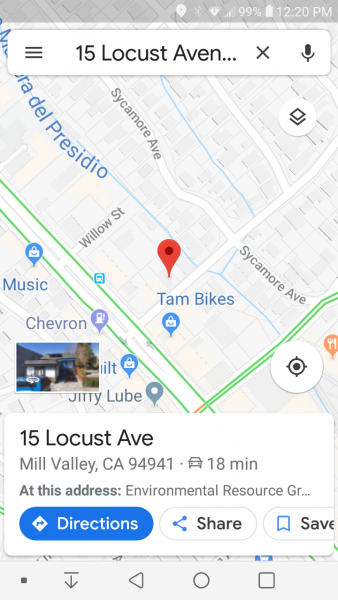
“Let’s say you were on a boat at a distance of one mile from the north magnetic pole. The arrow on your phone’s compass will point directly at the magnetic north, but the corresponding map on your phone — because it’s referencing an inaccurate forecast of where the magnetic north should be — will likely give you a false impression of where you are on the planet. And given the degree to which the magnetic north pole is moving each year, the map could be really off.”
Gizmodo went on to say that the farther away from the north magnetic pole a navigator is, the less of an issue the variation becomes.
But still, for sailors, it’s a little disconcerting not to know where your True North lies.
Why ‘Richardson’ Bay?
The trimaran that broke away and washed up on the east shore of Richardson Bay in Tiburon got me to wondering how many readers know Richardson Bay’s history. For instance, why ‘Richardson?’
Jumping Ship
On August 2, 1822, the British whaler Orion sailed in through the Golden Gate. Reportedly, the bedraggled Spanish garrison stationed at the Presidio fired the cannon salute customary when a foreign ship entered a port. Since they were poorly supplied it’s likely it was a weak salute. Captain William Barney sailed his ship past what is now the Marina District (a swampy area), what is now Fort Mason (the only waterfront area largely unchanged today), and into the cove under Clark’s Point (long leveled). This would have been near the intersection of Broadway and Battery under Telegraph Hill in present-day San Francisco. You might have parked where the Orion anchored.
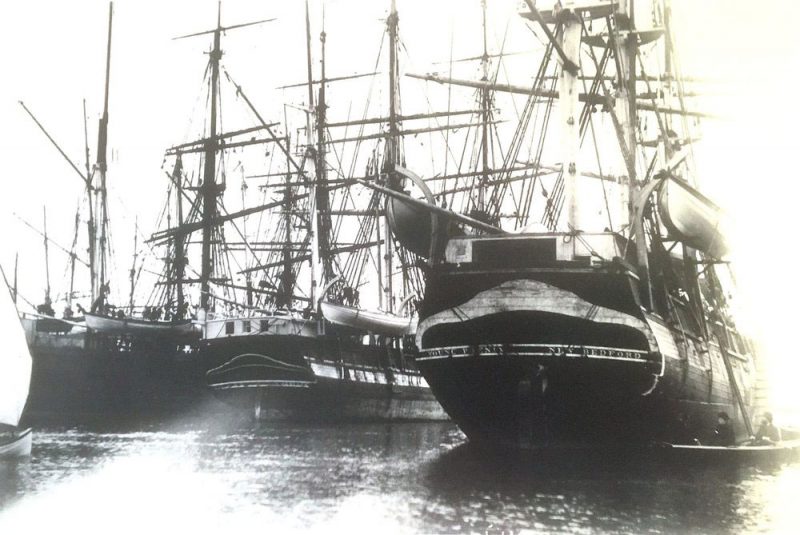
He needed supplies, so had risked seizure and entered Mexico, which was forbidden. However the Mexican authorities were not prepared to enforce the laws. They occupied a remote area so far away from the Mexican government in Mexico City that it took almost a year after Mexico became a country for them to know they were no longer Spanish citizens. Captain Barney sent his first mate, William Richardson, ashore because he spoke Spanish and had the best chance of dealing with the authorities and securing the needed supplies. Richardson was 27 years old and had started his seagoing career as a cabin boy at the age of 12. Perhaps the most important day in his life began when he dragged his skiff onto the beach and was arrested by a squad of Mexican soldiers.
They took him to the Presidio, three miles away. Expecting the worst, Richardson was instead welcomed by Comandante Don Ignacio Martinez and invited to a fiesta that evening. Richardson was wined and dined. He spent the evening dancing with Comandante Martinez’s 19-year-old daughter, Maria Antonia Martinez, a beauty whose mother was a Native American. Richardson, tall and slender, was said to be handsome. He was likely dressed in his best clothes since he had planned to meet with the Mexican authorities, although probably not in this way. It’s reported that Maria Antonia watched Richardson arrive in his skiff earlier that day. She said to her friends, “O, que hombre tan hermosa el estranjero desembarco del bote. El va hacer mi novio y yo voy hacer su esposa.” Love at first sight, but the pickings were probably pretty slim among the few newly minted Mexicans at the Presidio. Mexico had won its freedom from Spain just a year earlier. The news had only recently reached the Presidio. Richardson danced with Maria Antonia all night, including the Irish jig, according to the history books.
When he returned to the Orion the next day, Captain Barney was angry with Richardson for abandoning his duty and not returning to the ship with supplies. Apparently Richardson was not happy, jumped ship, returned to the Presidio, and asked Comandante Martinez for shelter. Martinez agreed and Richardson stayed in California when the Orion departed.
A Good Thing Going
Richardson then traveled to Monterey, the capital of Alta California, where he met the governor and agreed to teach navigation and carpentry to the Mexicans at the Presidio in return for permission to stay. He also converted to Catholicism and was baptized at Mission Dolores. Pueblo Dolores, which surrounded the Mission, was where most of the population, mostly Mission Indians, lived in what is now San Francisco. Richardson was one of eight English-speaking foreigners in California. In 1825, he married Maria Antonia. They spent their honeymoon across the Bay at a small harbor called Saucelito. He was the first European to see potential in this small settlement nestled under a high ridge on a small inlet off the main part of the Bay.
Richardson purchased a 15-ton sloop and began transporting crops and people around the Bay. He also became the first Bay pilot. Guiding the increasing number of foreign ships entering the Bay for trade, he served as a broker between their English-speaking officers and the Spanish-speaking ranchers and officials. The primary cargo the ships came seeking were cattle hides and tallow. Richardson’s sloop transported these commodities from the ranchos to the cove he named “Yerba Buena” (good herb) or to Saucelito, and loaded them aboard the foreign ships. Richardson had a good thing going — married to the Comandante’s daughter, he was the port’s pilot and broker, and he had a ship for transporting goods from the ranchos to his “ports.”
What he needed now was a place to live. So he moved his new family down south to Mission San Gabriel, where he convinced Governor Jose Figueroa that California should open a trading post and customshouse in Yerba Buena Cove. He also asked Figueroa to grant him a place to build a house. This coincided with the Mexican government’s secularization of the missions. The territorial assembly in Monterey, the capital, created ‘San Francisco’, which included the Peninsula, some of the East Bay, and Marin. Figueroa appointed Richardson Captain of the Harbor at Yerba Buena and granted him its first lot. Now Richardson was an ‘official’ Captain. And an official in the growing town named “Yerba Buena.”
Birth of a City
On June 25, 1835, Richardson, Maria Antonia, and and their three children arrived on a small hill just above his Yerba Buena Cove. They set up a tent-like shelter on what is now 823 Grant Avenue between Washington and Clay Streets (which were laid out and named much later).
Their only neighbor was Candelario Miramontes, a soldier who grew potatoes on a flat area just down the hill from Richardson’s tent, a place soon known as “the Plaza” and now Portsmouth Square. Later Richardson helped Francisco de Haro, who was Yerba Buena’s first alcalde, lay out a ‘street’ that stretched from Richardson’s residence toward Mission Dolores. Named Calle de la Fundacion, it was the first street in San Francisco. It became Grant Avenue after the Americans took over.
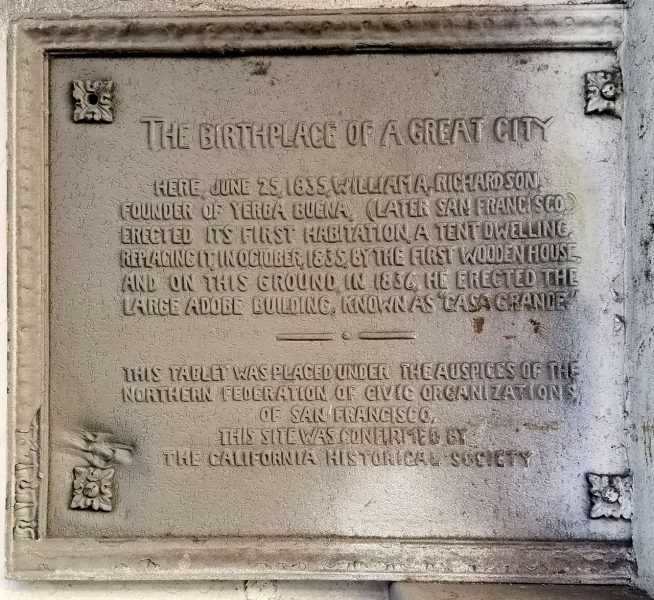
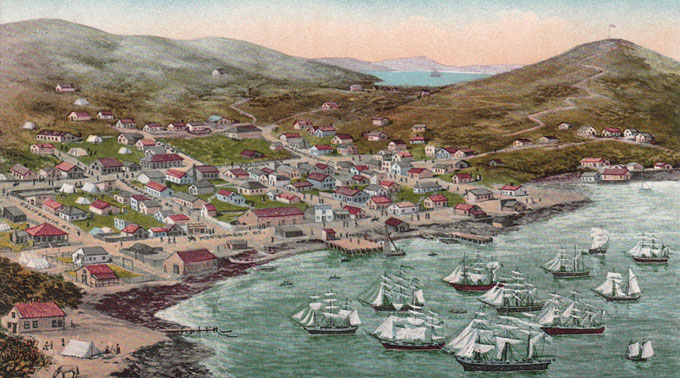
And so our Richardson Bay is named after this English sailor who became a Mexican and established the first seafaring business on what is now San Francisco Bay. He was responsible for Sausalito’s growth into a port for fishing and transporting lumber from the mills in Mill Valley and Corte Madera to build the Yerba Buena of the pre-Gold Rush era and San Francisco thereafter. Historians point out that, while Richardson left his name on a small inlet off San Francisco Bay, perhaps the world’s greatest cosmopolitan city was essentially founded by an immigrant deserter who married a woman of mixed ancestry, who reinvented himself several times, and who prospered.
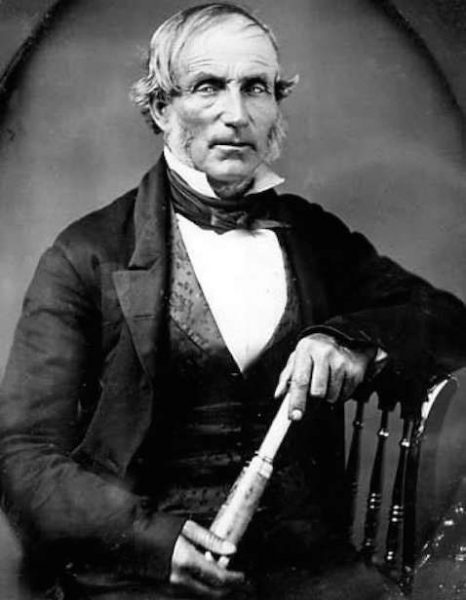
Ad: Sail a Small Boat Day at RYC
Swashing and Buckling with Captain Blood
Captain Blood is one of those movies that is so much of a classic, you feel like you’ve already seen it. But alas, we had not, and on a chilly night in early November at Spaulding Marine Center, we finally sat down to watch the 1935 swashbuckling classic. (The most we knew about Captain Blood, as it turned out, was that it made an appearance in one of our all-time favorite pirate-y, sailor-y movies, The Goonies [what Sloth was watching while chained in the basement].)
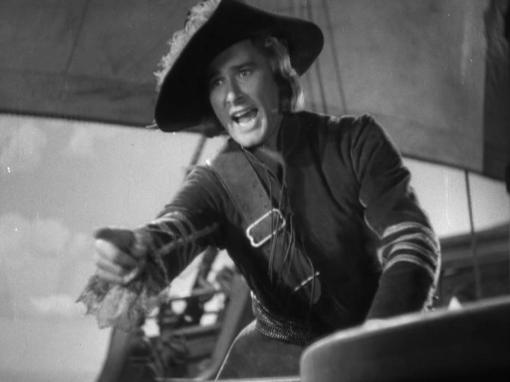
As we’ve said before, movies are best enjoyed with an audience. There is simply no substitute for the energy a crowd brings, especially the breed of sailing-movie aficionados at Spaulding, who cheered enthusiastically as the opening credits rolled.
As connoisseurs of movies — but of movies starting in the ’80s — we’ll admit that we sometimes had difficulty jibing with “old” films. That disconnect seems to be fading with time (re: age). We found Captain Blood instantly compelling. There was no way not to root for the hero, the enigmatic, dashingly handsome and savagely wry Errol Flynn in the title role. In the very first scene, as someone was knocking frantically on the door of Dr. Peter Blood, the maid asked “Who is it?” “That we’ll know when you open the door,” Blood quipped, then called the maid his “vinegary virgin,” drawing a whooping “ohhhh” from the crowd.
As in any good movie, we learn everything we need to know about our hero in the first few minutes: “I’ve been almost anywhere that fighting was in evidence. I fought for the French against the Spanish and the Spanish against the French. And I learned my seamanship in the Dutch Navy. But having had adventure enough in six years to last me six lives, I came here. Hung up the sword and picked up the lancet. Became a man of peace and not of war, a healer, not a slayer. And that I’m going to be as long as I’m on top of the sod and not under it.”
The greatest heroes are, without question, reluctant heroes.
After treating an enemy soldier, Blood was accused of treason against King James, and was threatened with hanging. His sentence was partially commuted, and he was sold into slavery in the Caribbean. While onboard the ship carrying him to the West Indies, Blood never failed to serve as a physician, which, in those days, seemed to consist solely of dabbing stricken patients with a rag.
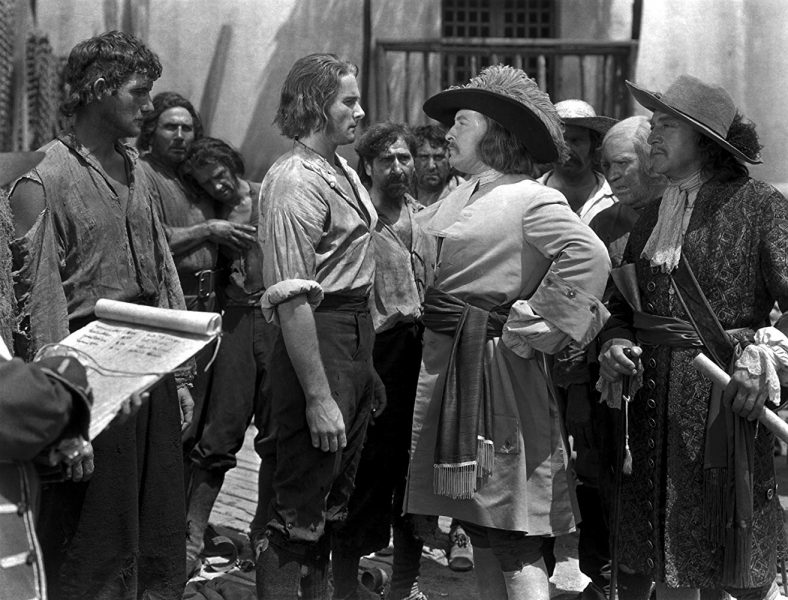
Once Blood is in Port Royal and up for auction, que Olivia de Havilland as Arabella Bishop, the niece of the tyrannical Colonel Bishop. Her entrance — no matter at what point of the film — was impossible to miss, as it was forever accompanied by dreamy violins and soft-focused cameras giving her a gauzy, angelic aura.
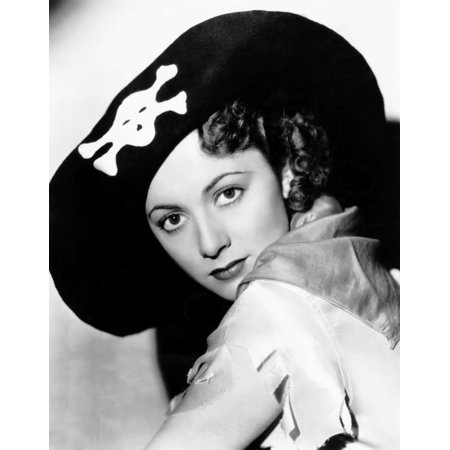
Thus began the fabulous tension (romantic and otherwise) between Blood and Arabella. She purchased Blood as a slave, and wanted him to be grateful that she’d saved him. Blood steadfastly refused, but still their romance budded and burned.
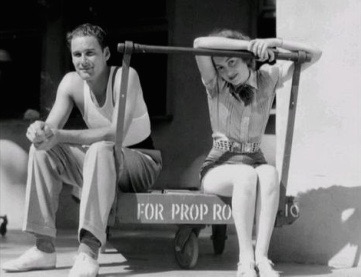
At some point during Blood and Arabella’s long horseback rides through the country, we asked ourselves, isn’t this a pirate movie? It was at roughly the midway point in the film — as Blood and other slaves were planning to flee — that a Spanish man-o-war attacked Port Royal. The only escape, it seemed, was through a life of piracy, and thus began the swashbuckling.
We found the unraveling of the story compelling, but dramatically different from modern movies, which, in the last 20-plus years, are prone to use a non-linear narrative. A modern Captain Blood would have likely started with the pirates, then used flashbacks to describe how they arrived at their life of jolly roguery. We’re not criticizing the old Blood — far from it — but the difference in storytelling between old movies and new is profound.
Meanwhile, swash-swash, buckle-buckle. Blood and his crew pirated, and pirated well. They contracted their rules of conduct — something that was surprisingly common during the Golden Age of Piracy — and included a decree that no woman should be violated during the course of pirating operations. This drew a load huzzah from the women in the audience.
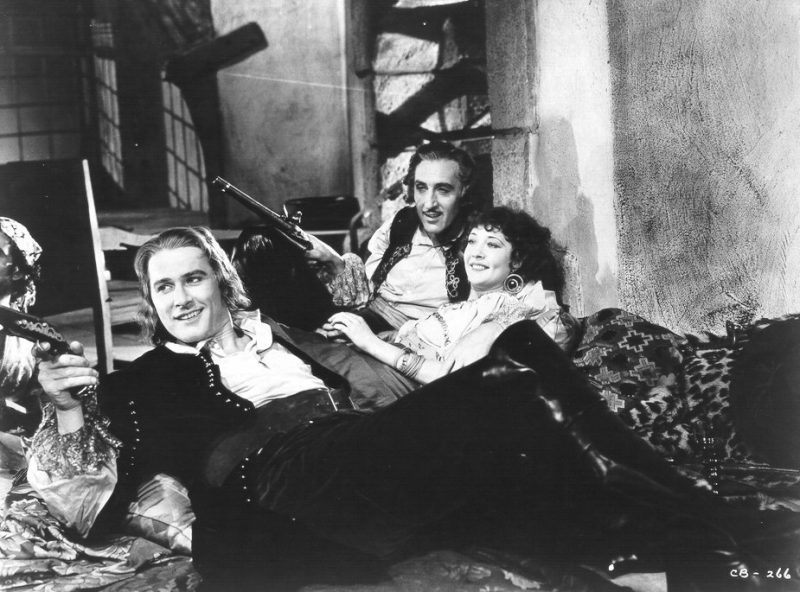
Meanwhile, Colonel Bishop sent Arabella to back to England on an extended holiday, but upon her return to the Caribbean three years later, her ship was captured by French buccaneer Captain Levasseur. In a delicious twist of fate, Blood convinced Levasseur to sell him Arabella and other English prisoners — and no, Blood did not miss the chance to revel in the irony.
Levasseur and Blood eventually drew swords in a wonderful fight to the cinematic death. The audience at Spaulding rooted wildly for our dashing hero, who was, of course, the victor. (Sacré bleu!)
Which brings us to Act Three: Redemption. Blood, mind you, was a reluctant hero and wrongly accused. He turned to piracy without regret. But his arc as a true champion of our hearts — especially to an audience in the ’30s — could not have been complete without some sort of return to grace.
After Arabella was less than grateful for her rescue (via purchase), Blood decided to return her and the other English prisoners to Port Royal. Approaching the island, they found French warships bombarding the city. In his pursuit of the pirate Blood, Colonel Bishop had left his dominion undefended, and the French seized on the opportunity.
Lord Willoughby, an English prisoner who had been accompanying Arabella, appealed to Blood’s sense of loyalty to his country.
“Captain Blood, are you an Englishman thinking of leaving when yonder an English town is being taken?” After some grandstanding, Willoughby informed Blood that there was a new king, William, and that His Majesty had offered Blood a pardon, and a commission in his Navy.
And so followed a most excellent battle at sea, which was capped by another brutally wry twist of fate. Blood managed to best Bishop worse than if he’d run him through.
Thoughts? Please comment below, or email us here.

